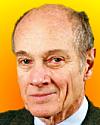
Born 29 Sep 1931.
American particle physicist who shared (with Val Logsdon Fitch) the 1980 Nobel Prize for Physics for “the discovery of violations of fundamental symmetry principles in the decay of neutral K-mesons.” Their experiment proved that a reaction run in reverse does not follow the path of the original reaction, which implied that time has an effect on subatomic-particle interactions. Thus the experiment demonstrated a break in particle-antiparticle symmetry for certain reactions of subatomic particles.«
American particle physicist who shared (with Val Logsdon Fitch) the 1980 Nobel Prize for Physics for “the discovery of violations of fundamental symmetry principles in the decay of neutral K-mesons.” Their experiment proved that a reaction run in reverse does not follow the path of the original reaction, which implied that time has an effect on subatomic-particle interactions. Thus the experiment demonstrated a break in particle-antiparticle symmetry for certain reactions of subatomic particles.«
Nobel Laureates and Twentieth-Century Physics, by Mauro Dardo. - book suggestion.
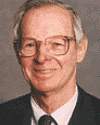
Born 29 Sep 1925; died 28 Aug 2007 at age 81.
Paul Beattie MacCready was an American engineer and inventor who invented not only the first human-powered flying machines, but also the first solar-powered aircraft to make sustained flights. On 23 Aug 1977, the pedal-powered aircraft, the Gossamer Condor successfully flew a 1.15 mile figure-8 course to demonstrate sustained, maneuverable manpowered flight, for which he won the £50,000 ($95,000) Kremer Prize. MacCready designed the Condor with Dr. Peter Lissamen. Its frame was made of thin aluminum tubes, covered with mylar plastic supported with stainless steel wire. In 1979, the Gossamer Albatross won the second Kremer Prize for making a flight across the English Channel.«
Paul Beattie MacCready was an American engineer and inventor who invented not only the first human-powered flying machines, but also the first solar-powered aircraft to make sustained flights. On 23 Aug 1977, the pedal-powered aircraft, the Gossamer Condor successfully flew a 1.15 mile figure-8 course to demonstrate sustained, maneuverable manpowered flight, for which he won the £50,000 ($95,000) Kremer Prize. MacCready designed the Condor with Dr. Peter Lissamen. Its frame was made of thin aluminum tubes, covered with mylar plastic supported with stainless steel wire. In 1979, the Gossamer Albatross won the second Kremer Prize for making a flight across the English Channel.«
More With Less: Paul McReady and the Dream of Efficient Flight, by Paul Ciotti. - book suggestion.
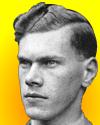
(1937)
Born 29 Sep 1911; died 17 Dec 1997 at age 86.
Reginald Victor Jones was an English physicist who was a scientific adviser to the British foreign intelligence service MI-6, and a science officer for the Air Ministry. He was described in an obituary as “the father of electronic warfare” during World War II. Winston Churchill said, “He did more to save us from disaster than many who are glittering with trinkets.” One major contribution was countering the German radio navigation beams that guided enemy pilots on their way to bomb Britain. Jones’s single-handed solution was significant in the Battle of Britain. In various ways, he also used deception with bogus radio traffic to confuse the enemy. He was eventually awarded as a Companion of Honor, the second-highest civilian award.«
Reginald Victor Jones was an English physicist who was a scientific adviser to the British foreign intelligence service MI-6, and a science officer for the Air Ministry. He was described in an obituary as “the father of electronic warfare” during World War II. Winston Churchill said, “He did more to save us from disaster than many who are glittering with trinkets.” One major contribution was countering the German radio navigation beams that guided enemy pilots on their way to bomb Britain. Jones’s single-handed solution was significant in the Battle of Britain. In various ways, he also used deception with bogus radio traffic to confuse the enemy. He was eventually awarded as a Companion of Honor, the second-highest civilian award.«
Most Secret War, by R. V. Jones. - book suggestion.
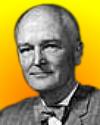
Born 29 Sep 1903; died 5 Feb 1973 at age 69.
John Heysham Gibbon was an American surgeon who invented the heart-lung machine. He was prompted when in 1930, as a Harvard research fellow in surgery, he saw a patient undergoing heart-lung surgery suffocate on his own blood. On 10 May 1935, he had built his first external pump, and was able to maintain the cardiac and respiratory functions of a cat. In the late 1940s, Gibbon received financial and technical assistance from the IBM Corporation to develop an oxygenator with sufficient capacity for a human. By 6 May 1953, with his improved machine he was able to perform the first successful open-heart operation - the repair of an atrial septal defect on 18-yr-old Cecelia Bavolek - maintaining the patient's heart and lung functions on the machine for 26 minutes.«
John Heysham Gibbon was an American surgeon who invented the heart-lung machine. He was prompted when in 1930, as a Harvard research fellow in surgery, he saw a patient undergoing heart-lung surgery suffocate on his own blood. On 10 May 1935, he had built his first external pump, and was able to maintain the cardiac and respiratory functions of a cat. In the late 1940s, Gibbon received financial and technical assistance from the IBM Corporation to develop an oxygenator with sufficient capacity for a human. By 6 May 1953, with his improved machine he was able to perform the first successful open-heart operation - the repair of an atrial septal defect on 18-yr-old Cecelia Bavolek - maintaining the patient's heart and lung functions on the machine for 26 minutes.«
A Dream of the Heart: The Life of John H. Gibbon, Jr. Father of the Heart-Lung Machine, by Harris B. Shumacker. - book suggestion.
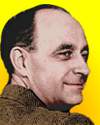
Born 29 Sep 1901; died 28 Nov 1954 at age 53. quotes
Italian-American physicist who was awarded the Nobel Prize for physics in 1938 as one of the chief architects of the nuclear age. He was the last of the double-threat physicists: a genius at creating both esoteric theories and elegant experiments. In 1933, he developed the theory of beta decay, postulating that the newly-discovered neutron decaying to a proton emits an electron and a particle he called a neutrino. Developing theory to explain this decay later resulted in finding the weak interaction force. He developed the mathematical statistics required to clarify a large class of subatomic phenomena, discovered neutron-induced radioactivity, and directed the first controlled chain reaction involving nuclear fission.
Italian-American physicist who was awarded the Nobel Prize for physics in 1938 as one of the chief architects of the nuclear age. He was the last of the double-threat physicists: a genius at creating both esoteric theories and elegant experiments. In 1933, he developed the theory of beta decay, postulating that the newly-discovered neutron decaying to a proton emits an electron and a particle he called a neutrino. Developing theory to explain this decay later resulted in finding the weak interaction force. He developed the mathematical statistics required to clarify a large class of subatomic phenomena, discovered neutron-induced radioactivity, and directed the first controlled chain reaction involving nuclear fission.
Enrico Fermi, Physicist, by Emilio Segre. - book suggestion.
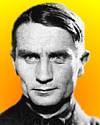
1938
Born 29 Sep 1898; died 20 Nov 1976 at age 78.
Soviet biologist and agronomist who not only believed the Mendelian theory of heredity to be wrong, but with Stalin's support for two decades actively obstructed the course of Soviet biology. He caused the imprisonment and death of many of the country's eminent biologists. He followed I. V. Michurin's fanciful idea that plants could be forced to adapt to any environmental conditions, for example converting summer wheat to winter wheat by storing the seeds in ice. As director of the Institute of Genetics of the Soviet Academy of Sciences (1940-65) his interference contributed to the disastrous decline of Soviet agriculture. After Stalin's death in 1956, he lost support and eventually in 1965 was exiled to an experimental farm.«
Soviet biologist and agronomist who not only believed the Mendelian theory of heredity to be wrong, but with Stalin's support for two decades actively obstructed the course of Soviet biology. He caused the imprisonment and death of many of the country's eminent biologists. He followed I. V. Michurin's fanciful idea that plants could be forced to adapt to any environmental conditions, for example converting summer wheat to winter wheat by storing the seeds in ice. As director of the Institute of Genetics of the Soviet Academy of Sciences (1940-65) his interference contributed to the disastrous decline of Soviet agriculture. After Stalin's death in 1956, he lost support and eventually in 1965 was exiled to an experimental farm.«
The Rise and Fall of T.D. Lysenko, by Zhores A Medvedev. - book suggestion.
Born 29 Sep 1895; died 20 Feb 1980 at age 84.
American parapsychologist.
American parapsychologist.
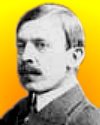
Born 29 Sep 1859; died 28 Jun 1923 at age 63. quotes
American physician who pioneered the use of bacteriological studies in the field of public health for the prevention and control of contagious diseases. From 1884 he learnt about current advances in bacteriology by visiting Europe. In 1892, he was appointed the first director of a new Division of Pathology, Bacteriology and Disinfection within the New York City Department of Health - the first municipal bacteriological laboratory in the U.S. - to address the scare of cholera from immigrants arriving at the harbour. He became general medical officer of New York City (1901) and then commissioner of health for the state of New York (1914). The measures he developed for public health spread through the nation. more
American physician who pioneered the use of bacteriological studies in the field of public health for the prevention and control of contagious diseases. From 1884 he learnt about current advances in bacteriology by visiting Europe. In 1892, he was appointed the first director of a new Division of Pathology, Bacteriology and Disinfection within the New York City Department of Health - the first municipal bacteriological laboratory in the U.S. - to address the scare of cholera from immigrants arriving at the harbour. He became general medical officer of New York City (1901) and then commissioner of health for the state of New York (1914). The measures he developed for public health spread through the nation. more
Childhood's Deadly Scourge: The Campaign to Control Diphtheria in New York City, 1880-1930, by Evelynn Maxine Hammonds. - book suggestion.
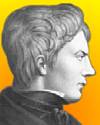
Born 29 Sep 1803; died 18 Dec 1855 at age 52. quotes
French mathematician whose work resulted in Sturm's theorem, an important contribution to the theory of equations. While a tutor of the de Broglie family in Paris (1823-24), Sturm met many of the leading French scientists and mathematicians. In 1826, with Swiss engineer Daniel Colladon, he made the first accurate determination of the velocity of sound in water. A year later wrote a prizewinning essay on compressible fluids. Since the time of René Descartes, a problem had existed of finding the number of solutions of a given second-order differential equation within a given range of the variable. Sturm provided a complete solution to the problem with his theorem which first appeared in Mémoire sur la résolution des équations numériques (1829; “Treatise on Numerical Equations”). Those principles have been applied in the development of quantum mechanics, as in the solution of the Schrödinger equation and its boundary values.
French mathematician whose work resulted in Sturm's theorem, an important contribution to the theory of equations. While a tutor of the de Broglie family in Paris (1823-24), Sturm met many of the leading French scientists and mathematicians. In 1826, with Swiss engineer Daniel Colladon, he made the first accurate determination of the velocity of sound in water. A year later wrote a prizewinning essay on compressible fluids. Since the time of René Descartes, a problem had existed of finding the number of solutions of a given second-order differential equation within a given range of the variable. Sturm provided a complete solution to the problem with his theorem which first appeared in Mémoire sur la résolution des équations numériques (1829; “Treatise on Numerical Equations”). Those principles have been applied in the development of quantum mechanics, as in the solution of the Schrödinger equation and its boundary values.
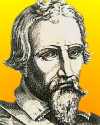
Born 29 Sep 1511; died 27 Oct 1553 at age 42.
Spanish physician who lectured on astrology (in which he firmly believed) and defended the botanical views of his friend Leonhard Fuchs. He went to Paris in 1536 to study medicine. At a time of the Protestant Reformation, he also held radical theological views which he published in anonymously in a book (1553) in which he also described the circulation of blood through the lungs. Servetus indicated that the blood came from the heart through the pulmonary artery and back through the pulmonary vein; it did not go through the heart muscle itself. Galen’s description was still accepted, and the insight of Servetus was ignored for decades (until extended by Harvey). For his heretical theology, Servetus was burned at the stake by Calvin.
Spanish physician who lectured on astrology (in which he firmly believed) and defended the botanical views of his friend Leonhard Fuchs. He went to Paris in 1536 to study medicine. At a time of the Protestant Reformation, he also held radical theological views which he published in anonymously in a book (1553) in which he also described the circulation of blood through the lungs. Servetus indicated that the blood came from the heart through the pulmonary artery and back through the pulmonary vein; it did not go through the heart muscle itself. Galen’s description was still accepted, and the insight of Servetus was ignored for decades (until extended by Harvey). For his heretical theology, Servetus was burned at the stake by Calvin.
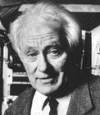
Died 29 Sep 2010 at age 86 (born 1 Aug 1924).
Polish-French physicist who was awarded the Nobel Prize for Physics in 1992 for his invention and development of subatomic particle detectors, in particular the multiwire proportional chamber, a breakthrough in the technique for exploring the innermost parts of matter. As particle physicists have focussed their interest on very rare particle interactions, which often reveal the secrets of the inner parts of matter, sometimes only one particle interaction in a billion is the one searched for. Charpak replaced now inadequate photographic methods with modern electronics that connected the detector directly to a computer.
Polish-French physicist who was awarded the Nobel Prize for Physics in 1992 for his invention and development of subatomic particle detectors, in particular the multiwire proportional chamber, a breakthrough in the technique for exploring the innermost parts of matter. As particle physicists have focussed their interest on very rare particle interactions, which often reveal the secrets of the inner parts of matter, sometimes only one particle interaction in a billion is the one searched for. Charpak replaced now inadequate photographic methods with modern electronics that connected the detector directly to a computer.
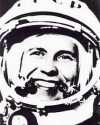
Died 29 Sep 2009 at age 78 (born 5 Oct 1930).
Pavel Romanovich Popovich was a Soviet cosmonaut who piloted the Vostok 4 spacecraft, launched 12 Aug 1962. He and Andriyan G. Nikolayev, who was launched a day earlier in Vostok 3, became the first two men to be in space simultaneously. He collected experimental data on the possibility of establishing a direct link between two space ships; coordination of astronauts' operations; and the effects of identical spaceflight conditions on the human organism. Problems with his life support system dropped the cabin temperature to 10 degrees Centigrade. He still managed to conduct experiments,and take colour motion pictures of the terminator between night and day. He subsequently commanded the flight of Soyouz 14 launched 3 Jul 1974 which docked with the Salyut 3 space station.
Pavel Romanovich Popovich was a Soviet cosmonaut who piloted the Vostok 4 spacecraft, launched 12 Aug 1962. He and Andriyan G. Nikolayev, who was launched a day earlier in Vostok 3, became the first two men to be in space simultaneously. He collected experimental data on the possibility of establishing a direct link between two space ships; coordination of astronauts' operations; and the effects of identical spaceflight conditions on the human organism. Problems with his life support system dropped the cabin temperature to 10 degrees Centigrade. He still managed to conduct experiments,and take colour motion pictures of the terminator between night and day. He subsequently commanded the flight of Soyouz 14 launched 3 Jul 1974 which docked with the Salyut 3 space station.
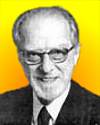
Died 29 Sep 1995 at age 89 (born 8 Jul 1906).
Theron Grant Randolph was an American allergist who broke from mainstream medicine in 1950, and founded environmental medicine, despite skepticism from traditional medical organizations. He characterized environmental illnesses with such symptoms as chronic headache, fatigue, and mental depression whereby susceptible people were harmed by noxious chemical vapours from various seemingly harmless materials like plastic or foam insulation. He began unorthodox therapies at a number of environmentally controlled units in the country, including one at Aurora, Illinois. There patients were secluded from environmental contaminants. Following advice from Randolph, some patients even built homes in the wilderness to escape urban contamination, and ate or exposed themselves to nothing that was not considered environmentally benign. Randolph treated over 20,000 patients in hislifetime. He wrote four books and over 300 medical articles.«[Year of birth slightly uncertain - based on New York Timesobituary giving age at death as 89.]
Theron Grant Randolph was an American allergist who broke from mainstream medicine in 1950, and founded environmental medicine, despite skepticism from traditional medical organizations. He characterized environmental illnesses with such symptoms as chronic headache, fatigue, and mental depression whereby susceptible people were harmed by noxious chemical vapours from various seemingly harmless materials like plastic or foam insulation. He began unorthodox therapies at a number of environmentally controlled units in the country, including one at Aurora, Illinois. There patients were secluded from environmental contaminants. Following advice from Randolph, some patients even built homes in the wilderness to escape urban contamination, and ate or exposed themselves to nothing that was not considered environmentally benign. Randolph treated over 20,000 patients in hislifetime. He wrote four books and over 300 medical articles.«[Year of birth slightly uncertain - based on New York Timesobituary giving age at death as 89.]
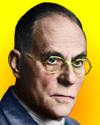
Died 29 Sep 1967 at age 84 (born 2 Mar 1883).
English pharmacologist and medical researcher who found an effective treatment for puerperal (childbed) fever and improved the treatment of burns. Puerperal fever resulting from infection after childbirth or abortion had affected women for centuries with severe abdominal pain, or even death. Coleman read of Domagk’s successful use of Protonsil, the first sulfonamide drug, against streptococcal infection in tests on mice and a few human subjects. In 1936, Coleman published the results of his clinical trial of Protonsil curing streptococcal puerperal fever, and launched a new era of antimicrobial chemotherapy. During WW II, he supervised the use of sulphonomides in the military. He then investigated control of infection in burns.«
English pharmacologist and medical researcher who found an effective treatment for puerperal (childbed) fever and improved the treatment of burns. Puerperal fever resulting from infection after childbirth or abortion had affected women for centuries with severe abdominal pain, or even death. Coleman read of Domagk’s successful use of Protonsil, the first sulfonamide drug, against streptococcal infection in tests on mice and a few human subjects. In 1936, Coleman published the results of his clinical trial of Protonsil curing streptococcal puerperal fever, and launched a new era of antimicrobial chemotherapy. During WW II, he supervised the use of sulphonomides in the military. He then investigated control of infection in burns.«
A New Approach to the Treatment of Burns and Scalds, by Leonard Colebrook. - book suggestion.
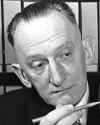
Died 29 Sep 1955 at age 68 (born 29 May 1887).
L(ouis) L(eon) Thurstone was an American psychologist who improved psychometrics, the measurement of mental functions, and developed statistical techniques for multiple-factor analysis of performance on psychological tests. In high school, he published a letter in Scientific American on a problem of diversion of water from Niagara Falls; and invented a method of trisecting an angle. At university, Thurstone studied engineering. He designed a patented motion picture projector, later demonstrated in the laboratory of Thomas Edison, with whom Thurstone worked briefly as an assistant. When he began teaching engineering, Thurstone became interested in the learning process and pursued a doctorate in psychology.
L(ouis) L(eon) Thurstone was an American psychologist who improved psychometrics, the measurement of mental functions, and developed statistical techniques for multiple-factor analysis of performance on psychological tests. In high school, he published a letter in Scientific American on a problem of diversion of water from Niagara Falls; and invented a method of trisecting an angle. At university, Thurstone studied engineering. He designed a patented motion picture projector, later demonstrated in the laboratory of Thomas Edison, with whom Thurstone worked briefly as an assistant. When he began teaching engineering, Thurstone became interested in the learning process and pursued a doctorate in psychology.
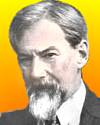
Died 29 Sep 1940 at age 67 (born 24 Mar 1873).
Swiss psychologist who conducted exploratory research in the fields of child psychology, educational psychology, concept formation, problem solving, and sleep. One of the most influential European exponents of the functionalist school of psychology, he is particularly remembered for his formulation of the law of momentary interest.
Swiss psychologist who conducted exploratory research in the fields of child psychology, educational psychology, concept formation, problem solving, and sleep. One of the most influential European exponents of the functionalist school of psychology, he is particularly remembered for his formulation of the law of momentary interest.
Experimental Pedagogy and the Psychology of the Child, by Edouard Claparede. - book suggestion.
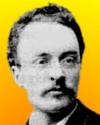
Died 29 Sep 1913 at age 55 (born 18 Mar 1858).
Rudolf Christian Karl Diesel was a German engineer who invented the internal-combustion engine that bears his name. After studying the four-stroke internal combustion engines developed by Nikolaus Otto, Diesel conceived of an engine that would approach the thermodynamic limit established by Sadi Carnot in 1824. If the fuel in a cylinder could be expanded at constant pressure, it could get closer to Carnot's limit. He patented the concept in 1892, while working at the firm of the refrigeration engineer Carl von Linde in Berlin. After boarding an English Channel steamer, he was found dead in the sea. It was most likely suicide resulting from depression, after having lost control over his invention and after receiving a great deal of criticism in the German engineering journals for his theories.[EB gives date of death 29 Sep 1913. Diesel's unwitnessed presumed suicide at sea leaves the exact date of death uncertain, and some sources give 30 Sep 1913, by which time he was known to be missing from those on board the steamer.]
Rudolf Christian Karl Diesel was a German engineer who invented the internal-combustion engine that bears his name. After studying the four-stroke internal combustion engines developed by Nikolaus Otto, Diesel conceived of an engine that would approach the thermodynamic limit established by Sadi Carnot in 1824. If the fuel in a cylinder could be expanded at constant pressure, it could get closer to Carnot's limit. He patented the concept in 1892, while working at the firm of the refrigeration engineer Carl von Linde in Berlin. After boarding an English Channel steamer, he was found dead in the sea. It was most likely suicide resulting from depression, after having lost control over his invention and after receiving a great deal of criticism in the German engineering journals for his theories.[EB gives date of death 29 Sep 1913. Diesel's unwitnessed presumed suicide at sea leaves the exact date of death uncertain, and some sources give 30 Sep 1913, by which time he was known to be missing from those on board the steamer.]
Diesel: Technology and Society in Industrial Germany, by Donald E. Thomas Jr. - book suggestion.
Died 29 Sep 1860 at age 54 (born 6 May 1806).
American dentist who was one of the founders of dentistry as a profession. He began as a partner in his brother's medical practice (1827). The next year, he turned to dentistry fulltime until 1835, during which time he moved to Baltimore and began a prodigious output of scientific articles and several books, including his most influential text, The Dental Art: A Practical Treatise on Dental Surgery (1839). He was a cofounder of the first dental school in the world, Baltimore College of Dental Surgery (1840), and cofounder of the first dental journal in the world, the American Journal of Dental Science (1849), serving as its editor for over 20 years. He is credited for placing dental education, literature, and organization on a permanent basis.
American dentist who was one of the founders of dentistry as a profession. He began as a partner in his brother's medical practice (1827). The next year, he turned to dentistry fulltime until 1835, during which time he moved to Baltimore and began a prodigious output of scientific articles and several books, including his most influential text, The Dental Art: A Practical Treatise on Dental Surgery (1839). He was a cofounder of the first dental school in the world, Baltimore College of Dental Surgery (1840), and cofounder of the first dental journal in the world, the American Journal of Dental Science (1849), serving as its editor for over 20 years. He is credited for placing dental education, literature, and organization on a permanent basis.
Died 29 Sep 1839 at age 66 (born 29 Jan 1773).
German mineralogist who devised the Mohs scale to compare mineral harness, illustrated by ten common or readily-available minerals. They are ranked by which can scratch another. At the beginning of his scale, 1 to 3, are talc, gypsum and calcite. At the top, the hardest 8 to 10, are topaz (including emerald and aquamarine), corundum (including as varieties sapphire and ruby) and diamond. Diamond is known for its common use to edge cutting tools, because it is four times as hard than even corundum. Interestingly, gold and silver come in the 2.5 to 3 range, which is comparable to the hardness of a fingernail (2.5). Mohs proposed this non-linear hardness scale in 1812, after spending a year as curator organizing an institution's mineral collection. By 1820, his scale was widely used by mineralogists, and he contined to refine it.«
German mineralogist who devised the Mohs scale to compare mineral harness, illustrated by ten common or readily-available minerals. They are ranked by which can scratch another. At the beginning of his scale, 1 to 3, are talc, gypsum and calcite. At the top, the hardest 8 to 10, are topaz (including emerald and aquamarine), corundum (including as varieties sapphire and ruby) and diamond. Diamond is known for its common use to edge cutting tools, because it is four times as hard than even corundum. Interestingly, gold and silver come in the 2.5 to 3 range, which is comparable to the hardness of a fingernail (2.5). Mohs proposed this non-linear hardness scale in 1812, after spending a year as curator organizing an institution's mineral collection. By 1820, his scale was widely used by mineralogists, and he contined to refine it.«
In 1988, the space shuttle Discovery blasted off from Cape Canaveral, Fla., marking America’s return to manned space flight following the Challenger disaster.
In 1954, the CERN convention was ratified by the 12 founding Member States, which, as stated by CERN's Director General Robert Aymar, “gave the new organization a mission to provide first class facilities, to coordinate fundamental research in particle physics, and to help reunite the countries of Europe after two world wars.” Thus, the Centre Européenne de Recherche Nucléaire was officially founded. In 1952, the third session of the provisional Council chose Geneva, Switzerland, to be the home of the new CERN Laboratory. Official ground-breaking took place at the Meyrin site on 17 May 1954.«
more
History of CERN, vol I, by A. Hermann, et al. - book suggestion.
In 1915, a transcontinental radio telephone demonstration was given in New York City. Speech was transmitted via Arlington, Va. to Mare Island at San Francisco, Cal. (2,500 miles). The same night, speech was also transmitted to Honolulu.
In 1914, a patent for a "Phonograph-Record" was granted to Thomas A. Edison (U.S. No. 1111999).
In 1891, Thomas A. Edison was issued U.S. patent No. 460122 for a "Process of and Apparatus for Generating Electricity" and No. 460123 for a "Phonogram-Blank Carrier."




